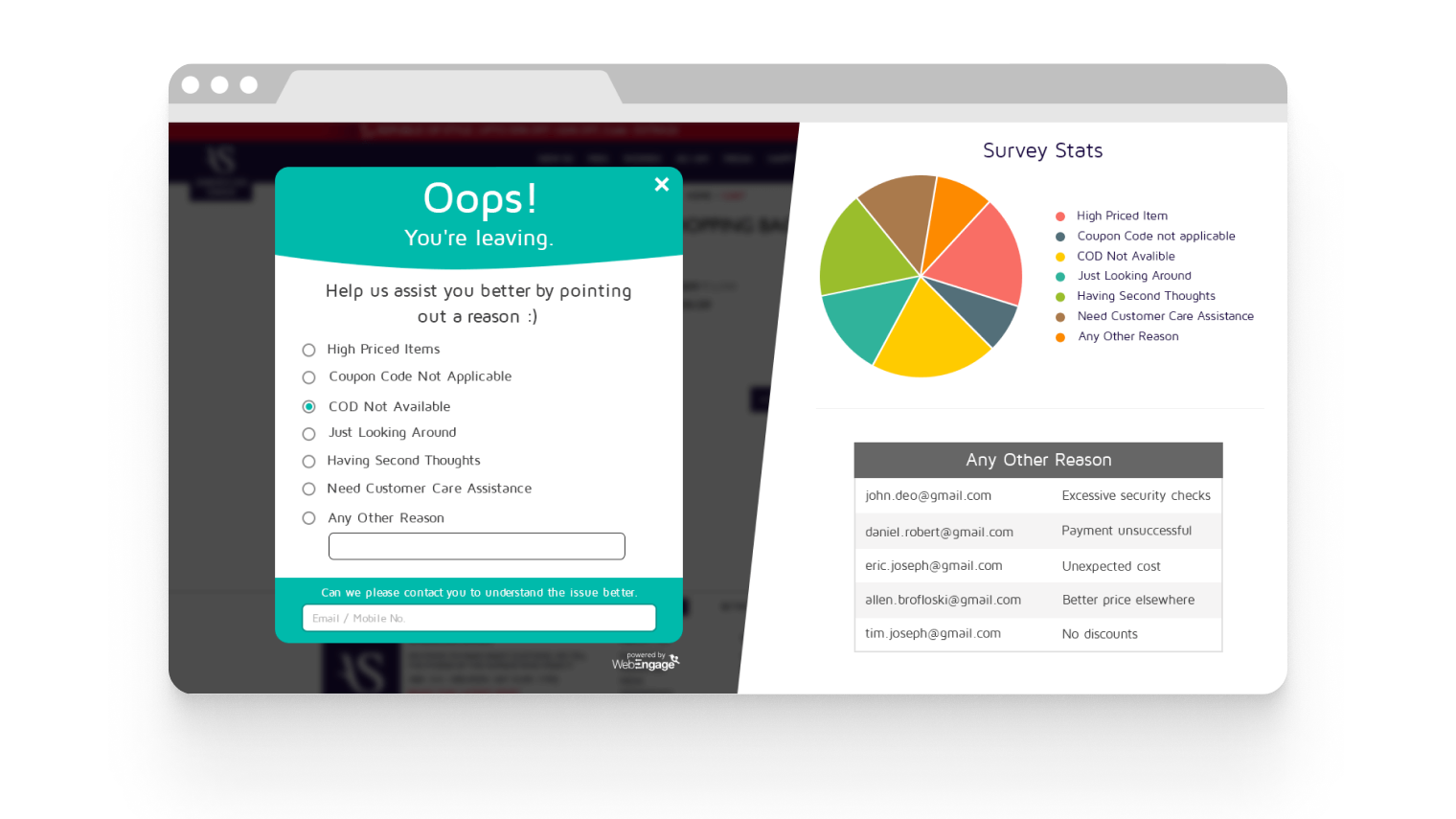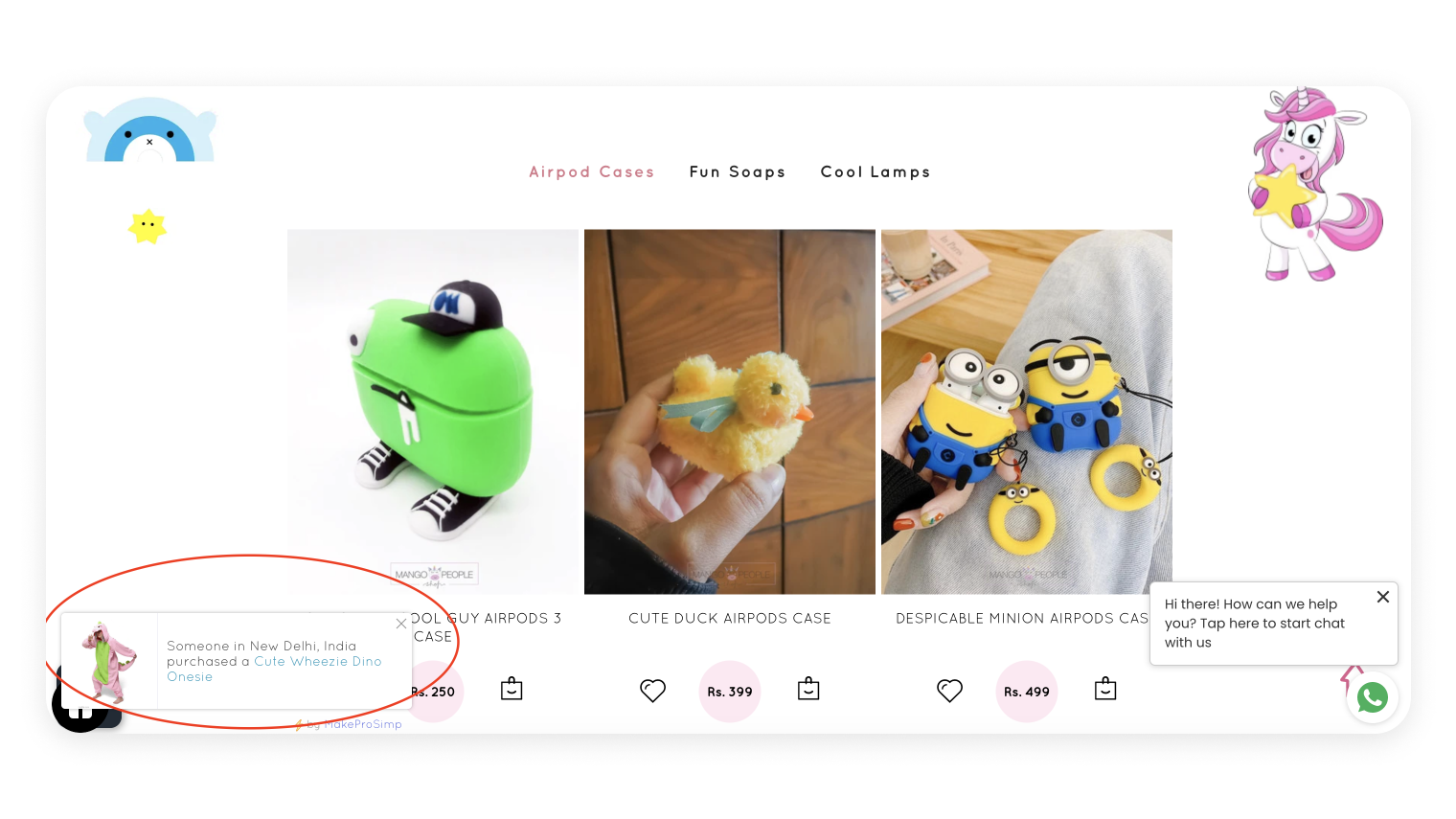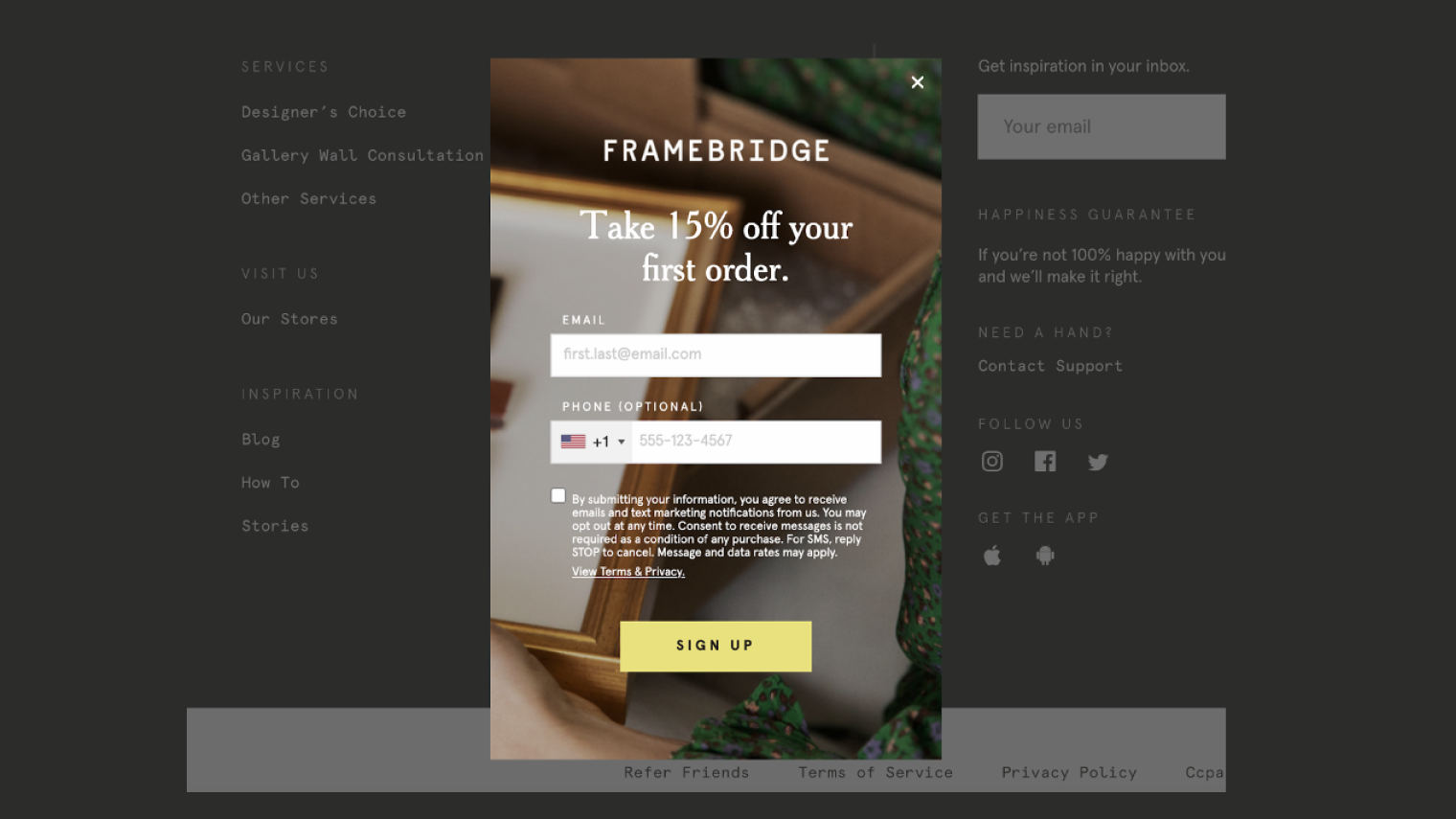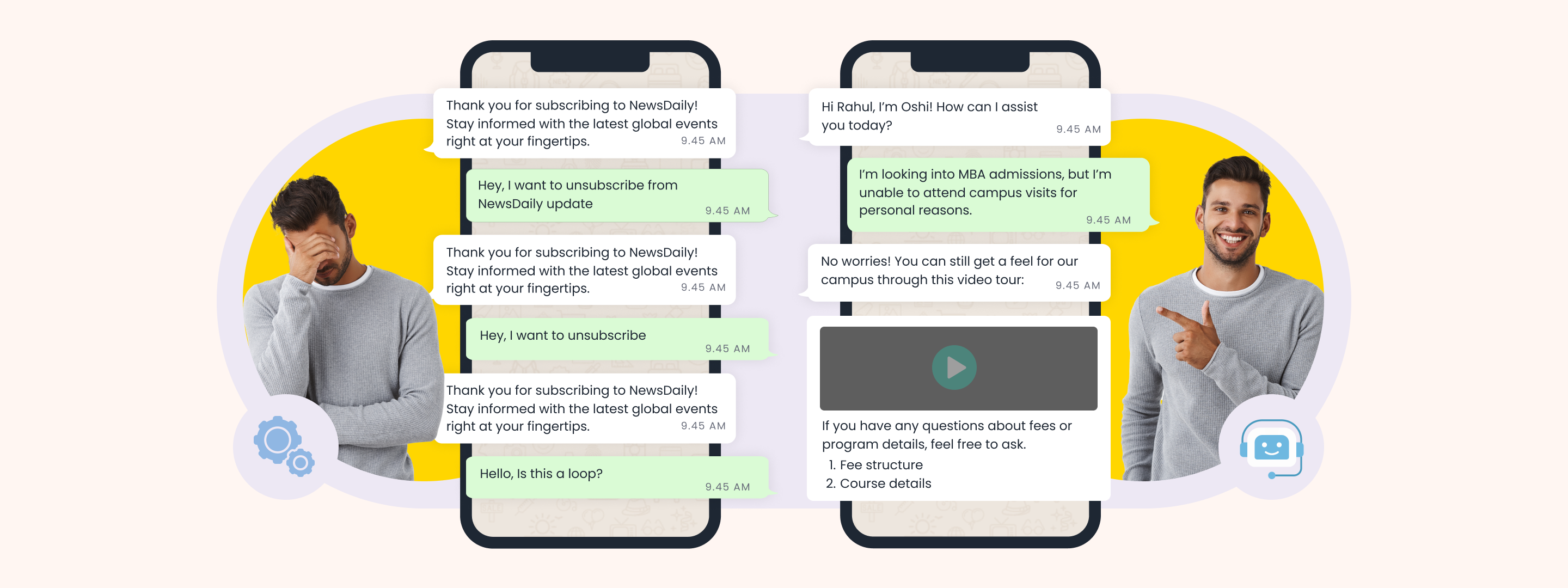The global pandemic crisis has propelled a massive shift in e-Commerce businesses by transitioning from offline to online buying and selling across all age groups, geographies, and economic statuses.
As per Statista, the eCommerce market worldwide is projected to grow by 9.30% (2023-2027), resulting in a market volume of US$6.39tn in 2027.
While this indicates an opportunity for businesses across industries, it also represents the increasing competition for consumer attention. So much so that the average e-Commerce conversion rate today stands at a mere 2.5-3% – even if you’re doing everything right!
But you can improve this conversion rate by implementing e-Commerce customer engagement strategies on your website.
Ways to boost e-Commerce customer engagement for your online store
In a world full of abundance-choice situations, the quality benchmark matters the most in terms of customer engagement and satisfaction.
Well-engaged customers buy, promote, show more loyalty, and contribute more revenue than average.
Here are some ways to boost e-Commerce customer engagement on your website.
1. Hyper-personalized browsing experience and on-site communication
80% of customers say they prefer to do business with brands that deliver highly personalized interactions.
Amazon has set the benchmark in hyper-personalization to every customer’s needs, and every consumer expects this level of personalization from brands selling online.
From displaying personalized product recommendations based on browsing history, previous purchases, and related interests to on-site communication, consumers now seek Amazon-level personalization while shopping online.
Brands selling on Amazon can achieve this through a full-service account management approach, ensuring their strategies align with Amazon’s customer engagement benchmarks.
The good thing is that dynamic content and personalized, on-site communication is no longer restricted to the retail giant. With powerful recommendation engines built by solutions like WebEngage, hyper-personalization is becoming the next must-have for online stores. For instance, fast-growing brands like Zivame, an online lingerie retailer, use web push and web pop-ups through journeys to increase conversion by 20% by creating engagement moments.
For instance, fast-growing brands like Zivame, an online lingerie retailer, use web push and web pop-ups through journeys to increase conversion by 20% by creating engagement moments.

2. Leverage interactive content and gamification
Most online stores are too focused on simply selling through their web pages. But the monotony is what you need to break to drive better engagement and conversions.
This is where bringing in strategies like gamification to create interactive content on your website comes into play. Instead of restricting this content to your communication channels like email, social media, and other platforms, implement them on the website.
You can implement spin wheel popups to gamify discounts, host on-site contests, surveys, offer scratch cards, or create a leaderboard for your VIP customers.
Studies have shown that gamification can improve customer engagement by tapping into contextual motivation.
Making your customers experience a ‘wow moment’ can undoubtedly change their perception, elevate their experience and build long-term loyalty and trust in your brand.
For example, American Swan uses WebEngage surveys to understand visitor intent and interest. With more streamlined data at hand right at the start of the journey, they are able to create tailored shopping experiences, leading to 8% survey response rate and hence higher customer engagement.

3. Provide live chat for real-time assistance
According to a survey, live chat is the most preferred customer service channel, meaning 73% of consumers prefer live chats for assistance.
E-commerce live chat avoids the waiting queue experienced during customer service calls and allows your customer support team to provide personalized assistance to consumers as they browse through what your brand offers.
But simply offering a live chat window is not enough to raise your engagement rate.
To enable efficient two-way communication, you need to implement chatbots that can address FAQs instantly and let your live agents focus more on conversations and queries that require human intervention.
Another way to improve your e-Commerce website engagement rate is to assist with advanced features like co-browsing and offering a personalized video call. This brings back human assistance to online shopping journeys, increasing the engagement rate instantly – similar to brick-and-mortar stores.
4. Highlight your social proof
Psychologist Robert Cialdini wrote, “Whether the question is what to do with an empty popcorn box in a movie theater, how fast to drive on a certain stretch of highway, or how to eat the chicken at a dinner party, the actions of those around us will be important in defining the answer.”
The average consumer reads at least ten reviews online before making a purchase decision. It was also found that 88% of consumers trust online reviews as much as personal recommendations.
Social proof is a must-have to boost customer engagement on your website.

But simply displaying a series of product reviews, ratings, and testimonials is no longer enough.
While they still play a crucial role in e-Commerce website customer engagement and conversions, ‘show and tell’ adds a layer of authenticity to them. This also helps create FOMO, getting visitors to take a desired action on your website.

For example, displaying on-site notifications every time a purchase is being made or a product is viewed shows visitors how similar consumers are engaging with your brand.
This means creating a gallery of social media posts shared by your customers or embedding a social feed where store visitors can see your products in use.
5. Keep your website navigation intuitive
According to research, 42% of people leave a website because of poor navigation and functionality.
This is where paying close attention to your menu, interlinking pages, and creating a customer journey come into play – especially when you have an extensive catalog of products.
The simplest way to make navigating your website more intuitive is to categorize your trending products based on common aspects, purpose, or use and it’s a good way to enhance the visibility of high demand products.
The idea is to prevent choice paralysis and make it simpler for site visitors to browse through different collections.
At the same time, we recommend displaying personalized recommendations as a visitor starts their journey. Use their interaction as a guiding light to understand their likes, preferences, and interests, displaying similar collections or products.
This ensures that a visitor does not need to go back to the menu to discover what else your store offers and can shop in a natural flow, like walking through a brick-and-mortar store.
6. Incentivize interaction with custom offers and discounts
E-commerce stores face intense competition regardless of the niche, which compels store owners to run discount campaigns to grasp customers’ attention.
But every store is doing the same – so much so that consumers now expect to see discounts on online stores, and it has stopped being as appealing.
This is where building out an element of interaction should come into play.
Club your offers and discounts to the micro-conversions you need visitors to take. For example, use announcement bars and exit intent popups to get subscriptions in lieu of sharing a custom coupon code instead of displaying the offer upfront.
Similarly, you can encourage the visitor to sign up for a customer account page on your e-Commerce website to unlock special prices for the ‘inner circle.’ 

7. Optimize and simplify the purchase cycle
The average checkout conversion rate is just 2.12% for most e-Commerce websites. This is often owing to several factors, such as a lengthy purchase journey, an extensive checkout process, a lack of easy payment and shipping options, etc.
With mcommerce sales to hit $534.18 billion, or 40.4% of e-Commerce sales, in 2024, shopping on the go is real, and your consumer seeks convenience and pace more than ever!
This is why it is crucial to look at the number of steps typically involved in a buyer’s purchase journey. This should include their actions from when they land on your website to how they explore products, add items to the cart and move to checkout.
The more optimized and streamlined the steps are, the more likely they will stay engaged and complete the purchase.
For example, offering a quick add-to-cart or wishlist button or the ability to select variants on top of product thumbnails on the collection and search result pages. This reduces the back and forth between product pages, letting the visitor take a desired action faster.
8. Make product search and discovery easy
Statistics have found that up to 30% of visitors on an e-Commerce website use the site search bar to start their shopping journey. These visitors clearly intend to purchase, seeking specific products – but how they search may vary.
This is why e-Commerce websites need to make their search functionality more robust. Apart from making it visible and easy to use, it is also essential to focus on how it works for the visitor.
To consider how each visitor’s search behavior may vary, we recommend including exact match, broad match, synonym search, auto-complete, and typo tolerance. This ensures that no matter what a visitor spells or describes the product, they are led to the right range of items on your e-Commerce website to keep their interest engaged.
Another way to make customer engagement during search interesting is to offer voice and image searches. This is where consumers can either use voice commands to do searches or upload a picture of a product they saw on social media or other channels to find it on your website.
Your search box needs to be an enabler of online shopping journeys and keep the visitor contextualized.
9. Establish communication over consumer-preferred channels
Implementing a multi channel sales strategy is every business’s need of the hour. The brands that meet their customers where they already spend their time the most are the strongest in the industry.
Yet, when it comes to e-Commerce websites, you still see businesses pushing for email subscriptions only. That’s where they lose an opportunity to engage the visitor.
Instead, offer subscriptions via email, SMS, WhatsApp, Messenger, or other channels based on whom you are targeting and what they tend to use the most.
Let your visitors decide how and where they want to engage with your business. The flexibility you provide will help you build a subscriber list faster and understand different segments of your target audience for better personalization of multichannel strategies.

10. (Pro tip) Focus on a responsive design and load time
Responsive and adaptive web design has proven to impact e-Commerce website conversions positively.
While focusing on responsiveness will help you ensure that the visual experience of browsing your site remains consistent across all screen sizes, it is also essential to focus on how fast this experience loads.
Studies have found that when pages load in 1 second, the average conversion rate is almost 40%. If the page takes 2 seconds to load, this conversion rate drops to about 34%, and at 3 seconds, it reaches 29% or lower. The longer your website takes to load, the more conversions you lose.
To ensure good website health, we recommend running frequent audits on all the functionalities you have added via custom code or additional apps and solutions.
At the same time, we also recommend looking into your analytics. Identify where your highest traffic comes from – sources, locations, and devices. This helps you focus your optimization efforts to ensure an excellent experience for that demographic.
Wrapping it Up
With many options available to online shoppers, discounts are no longer as enticing. Consumers now seek businesses that can understand their needs, preferences, and interests and tailor their buying journey.
With customer experience taking center stage, the businesses that focus on personalization are winning the game of customer engagement and retention. And your strategies need to evolve continually – on your website too!
Remember to proactively monitor, measure and optimize how you engage customers on your e-Commerce website.










 Surya Panicker
Surya Panicker